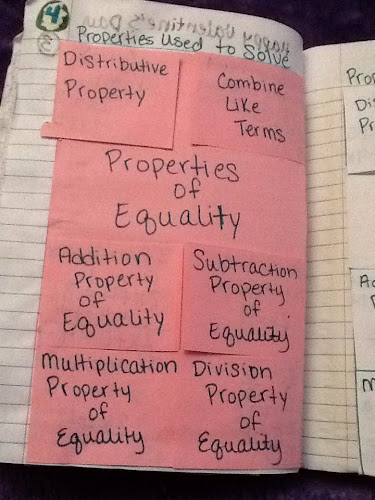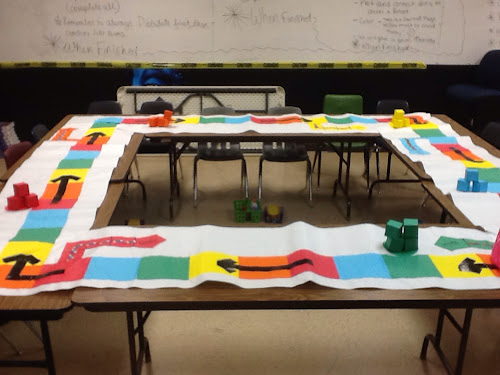For my first year of teaching Algebra 1, I have made a lot of mistakes. These mistakes all revolve around an assumption. I assume that my students already know this and that. This comes from my experience in state testing remediation for 11th graders for the past three years. I now have realized that I have a chance to teach students to understand Algebra 1 from the beginning. I decided to review solving equations with my students, since this was a nightmare at the beginning of the year. I decided to teach them to understand each component of the process and what solving meant.
Step 1: "Unwrapping Your Solution"
I love reading educational material and Danika McKellar is one of my preferred authors. I remember her referencing gift-wrapping as a metaphor for solving equations. The idea of operations applied to a solution is similar to wrapping an object to hide its identity. To reveal the item, one has to reverse the process of wrapping, which is similar to finding a solution by reversing the applied operations.
It didn't turn out as spectacular as I would have preferred. However, this was a day well spent because my students no longer feared equations (for the most part).
Step 2: Properties Used to Solve
We identified the most common properties used in solving equations. Within the notes, we used the same equation to demonstrate how similar operations can be applied to acquire the desired result.
Step 3: How to Solve Those Equations
With the use of multi-door flap foldables, students identified each step in solving an equation by technical property and then by general vocabulary accumulated by the class. This step was critical in building their fluency in solving equations. Even lower level students that were hesitant in the process could solve.
Example1: We always started with the inside process.
Then finish by summing up with general words to help them identify the steps.
Example 2:
Step 5:
We reviewed with the giant Sorry board game. During this step, students started with a given equation including the solution and focused on the solving process.
Step 6:
TEST: I gave them a test in standardized format and received outstanding results! :)











